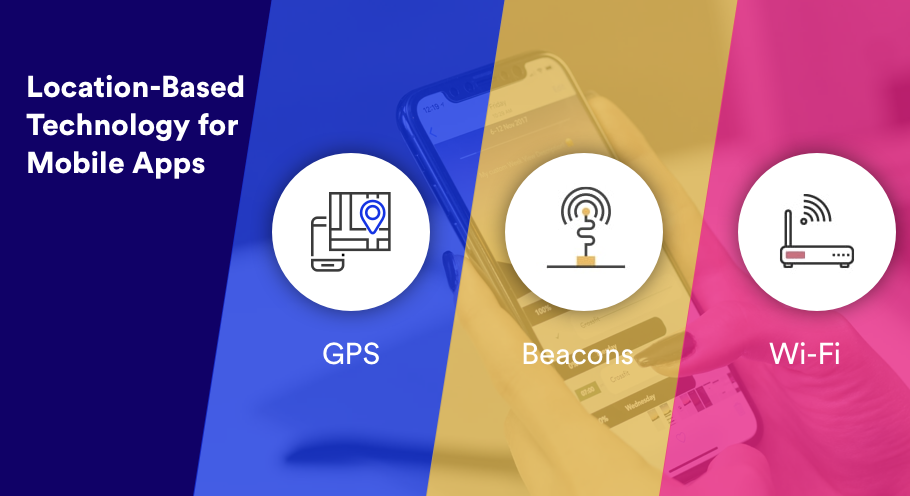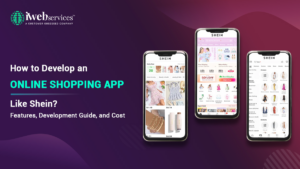Mobile applications require a location to enhance personalization and make the user experience feel more relevant. As a result, mobile app developers are leveraging various new technologies and methods to make sure a location is available all the time on their apps, whether the device is present indoors, outdoors, or even if it’s pouring like there is no tomorrow.
Beacon is a newer technology which is also known as the “GPS of indoor spaces” due to its precise-to-millimeters location accuracy. The adoption of Beacon technology is comparatively lower when compared with other location-detection technologies like GPS, Wi-Fi, and RFID, but it’s catching on fast as more marketers have now realized its business value.
Wi-Fi has been used to improve GPS location for a long time. The relative position of a device related to a nearby Wi-Fi hotspot leads to a calibrated position even in a partially enclosed space.
Let’s compare GPS, Wi-Fi and Beacon technology and conclude which one should a mobile developer include in his app for the most precise location detection.
GPS
GPS is the backbone of any outdoor location detection system in the world. GPS powers everything from bus map navigation to local search results (with the help of a web search engine like Google Local Search).
However, GPS devices are next to useless when an obstruction blocks the satellite link with the device. The obstruction could be either from a rooftop or clouds.
Geofencing is a new method that inspects location data received from GPS chip inside a smartphone to trigger an action. Many iOS and Android apps present today include geofencing APIs to send location-based notifications. The location awareness is configured in the app with the help of integrated Maps APIs like the Google Maps Android API.
Geofencing works without any issues when the defined virtual perimeter is outdoors. However, as soon as the geofence moves to an indoor area like a movie theater, the geofence ceases to exist. That means if you have updated your movie booking app to direct the viewers to their respective seat by setting virtual boundary across every seat, you will see a reasonable drop in your App Store ratings.
You will find this article useful: Impact of Technology in Real Estate
Wi-Fi
Wi-Fi wasn’t originally developed for location detection. However, when Intel made it a standard across its entire range of laptops, the adoption rate increased exponentially. Educational campuses became its adopters and with Wi-Fi routers going into the mass production, Wi-Fi became a global phenomenon.
If you live in a well-inhabited locality, then finding 10-20 hotspots on your smartphone screen is not surprising anymore. Wi-Fi is so common these days that app developers now assume that a user will always be surrounded by Wi-Fi hotspots.
Finding the location of a smartphone which is connected to a fixed Wi-Fi hotspot is super easy. GPS together with indoor Wi-Fi setup can be made to map indoor spaces like a mall. If you’re passing by a Zara store, then a nearby Wi-Fi hotspot can send you a notification with a coupon code. This entire mechanism can be made to work without an app if Wi-Fi radio is active on that device.

Beacon Technology
Google Eddystone and Apple’s iBeacon are the cornerstones of Beacon technology which is enabled by Bluetooth Low Energy (BLE). It can be added to an existing Android or iOS app by means of the aforementioned Beacon profiles.
Mobile apps with either of the Beacon profiles enabled will allow your device to connect with miniature BLE devices which are normally placed in retail spaces and similar indoor commercial spaces. When a person enters a neighboring supermarket with beacons installed, the device in his pocket captures transmitted Bluetooth signals in an encoded form, which can be decoded by a Beacon-enabled app.
An app can decode the signals as it calculates the absolute position of the device user with respect to the beacon inside the supermarket and sends them a location notification. For example, the app can coordinate with the nearest beacon to send an offer every time a person is at the shampoo section of the market.
When the supermarket approaches a Walmart in size, then the owner has to install far more devices than he can afford. The range of BLE is only 328 feet. Imagine how many devices an over-ambitious owner could install in the larger-than-life 5.9 million square foot Dubai Mall.
For small to medium commercial space, there is no better location identifier than a BLE equipped beacon for your app.

Developing Multilingual Mobile Apps
Today every app tend to have GPS and Wi-Fi-based location enabled by default. Beacons are a relatively new technology, app adoption is still in its beginning state and it will grow as more and more retail spaces embrace this mobile app technology for their business gains.
Unlike Wi-Fi and GPS, beacons don’t need any dedicated hardware as almost every smartphone, have a Bluetooth radio included.
The industry expects increased production which will thus increase demand and support from both Apple and Google, and the price of beacon devices will drop eventually.
We must prepare for the next revolution called “location-based retail marketing” encapsulated in BLE technology.
This is probably one of the best time to update your retail mobility app to beacons or, if you’re building one from the scratch, think “beacon” whenever you think of the “location.”
 December 7, 2018
December 7, 2018







